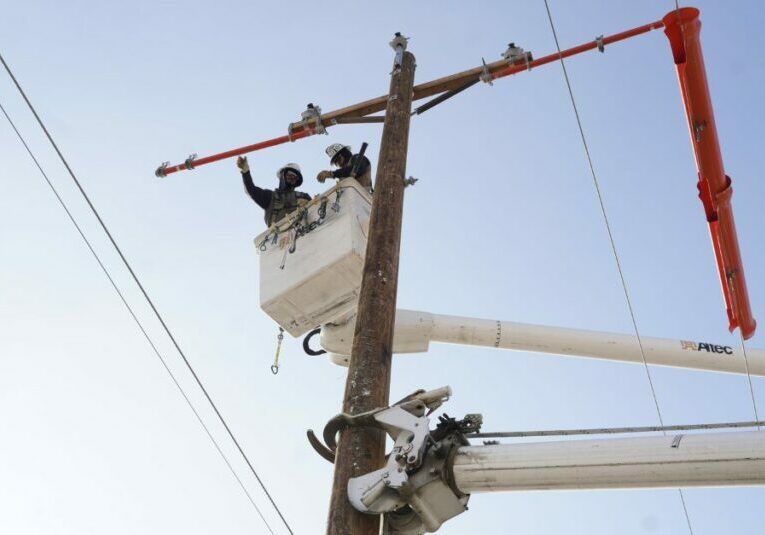The Vital Role of the Lower Snake River Dams

A crucial asset for the Northwest and our members
By Josh Lozano, Benton REA Director of Energy Policy and Contract Management
The four lower Snake River dams (LSRD)—Ice Harbor, Lower Monumental, Little Goose, and Lower Granite—are indispensable to the Northwest. Their benefits extend to our cooperative membership and beyond, impacting energy production, economic stability, and environmental stewardship. Here’s an in-depth look at why these dams are crucial and the recent developments that jeopardize their future.
Benefits of the Lower Snake River Dams
1. Renewable Energy Production:
The lower Snake River dams collectively generate over 1,000 average megawatts of electricity annually (equivalent to the average load of a city the size of Seattle), providing clean, reliable, renewable energy throughout the Northwest. This is especially important as we aim to reduce our carbon footprint and achieve the goals established by the Washington State Legislature through the passage of the Clean Energy Transformation Act.
Additionally, these dams provide over 2,000 megawatts of sustained peaking capability during the winter when demand for electricity is at its highest in the Northwest. In total, the LSRD have the capacity to generate over 3,000 megawatts of carbon-free electricity.
2. Economic Stability:
The LSRD support thousands of jobs in the region, from those directly involved in operations and maintenance to ancillary roles in tourism and recreation. They also facilitate inland navigation, allowing for the efficient transport of goods, particularly agricultural products, from the interior to global markets. This navigation capability significantly reduces transportation costs and greenhouse gas emissions compared to other methods, resulting in an average of 10 million tons of cargo worth over $3 billion annually.
3. Environmental Stewardship:
While hydropower is a renewable energy source, concerns have been raised about its environmental impact, particularly on salmon populations. However, significant investments have been made to enhance fish passage and improve habitat conditions. These measures include fish ladders, spillways, and habitat restoration projects. The ongoing efforts demonstrate a commitment to balancing energy needs with environmental protection.
Recent Developments: Columbia Basin Restoration Initiative
In December 2023, the United States Government, in collaboration with four Columbia River Basin tribes (Yakama, Umatilla, Warm Springs, and Nez Perce Tribes) and the governors of Washington and Oregon (collectively known as the “Six Sovereigns”), signed a billion dollar agreement aimed at supporting tribally sponsored clean energy projects and restoring native fish and their habitats throughout the Columbia River Basin. Unfortunately, this agreement was negotiated without input from public power utilities, millions of regional electricity consumers, other federally recognized Washington tribes, thousands of dairy farmers and ranchers, wheat and barley farmers, wine grape growers, potato farmers, apple growers, and six other impacted states. Members of Congress, the only entity authorized to breach dams, were also excluded, despite the report mentioning dam breaching numerous times.
The key components of the agreement include:
Potential Impacts on Washington Utilities and Ratepayers:
This agreement could significantly affect Washington utilities and their ratepayers. A primary aspect of the agreement involves the Department of Energy (DOE) supporting the development of one to three gigawatts of Tribally-sponsored clean energy projects. According to U.S. Government Commitments document, these new energy projects and the electricity they produce, “will be planned as replacement power for the lower Snake River dams if Congress authorizes the breach of those dams.”
Replacing the power generated by the LSRD poses the greatest financial risk to public power utilities. According to Bonneville Power Administration’s (BPA) analysis on the topic, replacement costs are estimated at $415 to $860 million annually, equating to a 21% to 43% increase in BPA power rates.
Equally concerning are the available resources to replace the lower Snake River dams. To support tribal efforts, the DOE has proposed a “PNW Tribal Energy Program” to provide technical assistance, planning, and funding to the Yakama, Umatilla, Warm Springs, and Nez Perce tribes for developing “clean, renewable, socially-just resources.” It is assumed these resources will be wind and solar.
While wind and solar have a role in the regional energy portfolio, they cannot replace the reliability benefits offered by the LSRD. BPA relies on the four lower Snake River dams to meet peak energy demands year-round. In an extended cold snap or if another power plant shuts down unexpectedly, the LSRD can generate over 2,650 megawatts of energy for 10 hours per day for five consecutive days. This represents more than 10 percent of the total capacity of the Federal Columbia River Power System.
Increased Investment in Fish and Wildlife Programs:
Significant funding, in addition to the millions of dollars ratepayers already provide annually to fund habitat restorations actions, has been authorized within the agreement to enhance fish passage, improve habitat, and support hatchery programs. Recently, the House Appropriations Energy and Water Development and Related Agencies Subcommittee approved legislative language that caps BPA customer cost exposure under the December 2023 agreement at $300 million. Should this new fish and wildlife mitigation funding be authorized by Congress, it would result in a 2.7% rate impact over a 10-year period.
According to the Public Power Council (PPC), Northwest public power communities have invested $685 million annually in BPA fish mitigation measures over the past decade. These efforts have yielded substantial benefits, including record adult salmon returns surpassing pre-dam levels. Additionally, BPA reports that the lower Snake River dams have some of the world’s most advanced and successful fish passage systems, on track to achieve a 96 percent average dam survival rate for young spring chinook and steelhead migrating downstream, and 93 percent for young summer-migrating fish.
Developments Since the Agreement: Columbia River Task Force
Following the December 2023 agreement, the Columbia River Task Force was established to oversee the implementation of the agreement’s provisions. Alarmingly, the task force lacks any representation from the region’s energy stakeholders. The Task Force will be co-chaired by Acting Deputy Secretary of the Interior Laura Daniel-Davis, Deputy Secretary of Energy Dave Turk, and NOAA Assistant Administrator for Fisheries Janet Coit. Other participating agencies include the Army Corps of Engineers, Department of Agriculture, Environmental Protection Agency, Department of Transportation, Office of Management and Budget, and the White House Council on Environmental Quality.
Key Actions Taken by the Task Force:
Lower Snake River Water Supply Replacement Study:
Following the announcement of the newly created interagency task force, the Department of the Interior’s Bureau of Reclamation announced a formal partnership with the State of Washington to conduct an extensive water supply analysis in the Columbia River Basin. This study will explore methods to modernize and improve irrigation, municipal, and industrial water withdrawal systems potentially affected by the possible removal of the four lower Snake River dams. A draft report is expected by late 2024.
Department of Interior Report:
In late June 2024, the Department of the Interior released a 73-page report titled, Historic and Ongoing Impact of Federal Dams on the Columbia River Basin Tribes. The National Rural Electric Cooperative Association (NRECA) described this report in a letter to Congressional leaders, including Senator Patty Murray, as “telegraphing a desire to reopen the 2020 Columbia River System Operations National Environmental Policy Act (NEPA) Record of Decision,” which had rejected dam breaching outright. The letter further describes the report as “signaling a desire to exceed the statutory boundaries of the Endangered Species Act and other environment laws.”
Why This Matters to Our Members
For our members, the lower Snake River dams are vital for providing affordable, reliable, and carbon-free renewable energy. The recent agreement and the formation of the Columbia River Task Force threaten the future of hydropower in our state. As demand for clean electricity increases due to decarbonization efforts, transportation electrification, and population growth, it is crucial to preserve these vital resources for the foreseeable future.
The lower Snake River dams are more than just energy sources;  they are a cornerstone of our region’s infrastructure, economy and environment.
they are a cornerstone of our region’s infrastructure, economy and environment.
Recent Posts

Five Ways to Safeguard Your Home This Winter

Winter Weather May Impact Electric Bills

Cybersecurity Tips For a Safer Digital World

Electric Co-ops Grow for the Communities They Serve

Go Above and Beyond for a Safe Harvest

The Vital Role of the Lower Snake River Dams

5 Tips to Beat the Summer Heat

What You Need to Know About Furnace Filters

May is Electrical Safety Month




